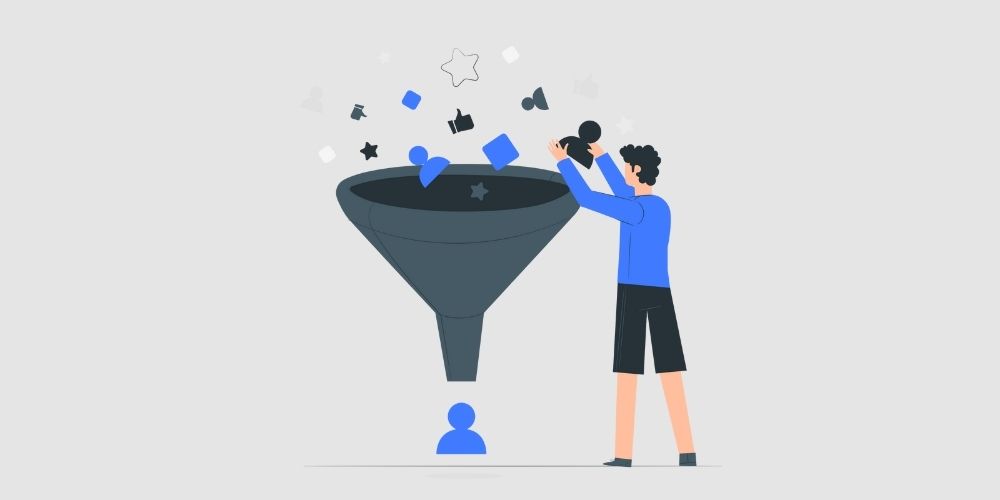We’ve been tracking the behavior of late stage buyers since 2013. The data is shocking!
In 2018, less than 20% of leads were ready to buy; in 2019, it dropped to 9%.
In 2020? You guessed it – it was lower again, with only 5% of leads close enough to make a purchase decision.
It’s not getting any better.
For sales teams, it means that more than 90% of leads require nurturing, support, and consistent communication throughout the sales funnel.
Our own data backs this up as it can take anywhere from weeks to months to close a sale.
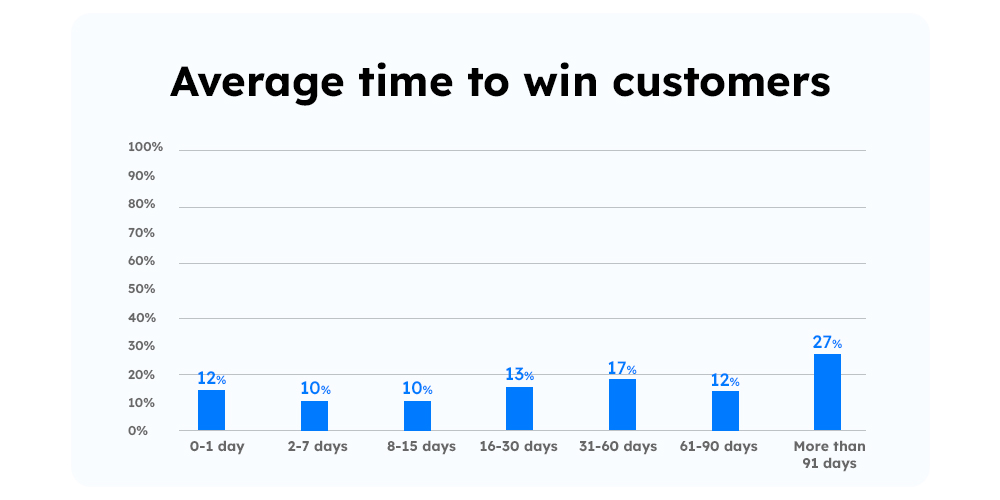
Even though the sales cycle largely depends on the market segment and your sales strategies, the above data confirms that not all leads are ready to buy from day 1.
Sometimes, buyers need an affirmation.
And that’s where sales reps pitch in. They try to understand the buyer’s needs and explain how they could help them with their product/service. But with the large volume of leads coming in, salespeople are bound to miss a few opportunities. There must be a way to manage your sales funnel better.
I’ve got you. Let’s walk you through the aspects of sales funnel management to help you achieve and exceed your sales targets.
What is a sales funnel?
A sales funnel is a pictorial representation of various sales stages that leads pass through before becoming customers. It is represented as an inverted pyramid. The top rung is the widest with all the leads contacted, and the lower rung is the ones who have made a purchase.
Let me give you an example to show how the sales funnel works in real life.
If you have been a regular follower, then chances are that you have received an email from Shibani Roy. Shibani heads our webinar program, and every time a webinar is scheduled, she sends the invite to an average of 40,000 leads. (Yes, she does send out so many emails )
Now let’s see how this works.
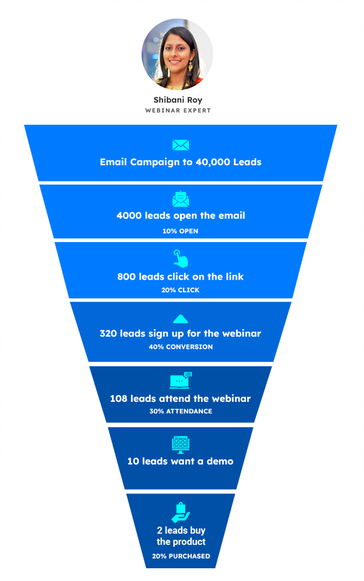
From those 40,000 recipients, 4000 leads opened the email (10% open). Among those who opened the email, 800 clicked on the registration link (20% clicks). Out of the 800 who checked the registration page, 320 registered (40% conversion), and 108 actually attended the webinar.
After the webinar, 10 people requested a product demo (10% interested), and 2 bought it (i.e., 20% of the 10 people interested).
You must have noticed that a lead passes through several stages before becoming a customer. The process of managing several interactions simultaneously and influencing them to buy your product/service is sales funnel management.
One thing to note:
A sales funnel is not a marketing funnel.
There is a difference. Let me explain.
Difference between sales funnel and marketing funnel
| Sales funnel | Marketing funnel | |
| Goal | To entice people to buy your product or service. | The goal of the marketing funnel varies. It may involve creating brand awareness (measured in impressions), building your subscribers list, generating sales qualified leads, etc. |
| Stages | Awareness, attraction, interest, purchase, delight, loyalty, and advocacy. | Awareness, interest, consideration, conversion |
| Teams involved | Sales and marketing | Generally marketing only |
| Essential software tools | Sales prospecting, CRM, cloud calling solutions, email marketing, meeting scheduling, collaboration, and sales intelligence tools | Email marketing, advertising, social media scheduling, campaign management, collaboration, and content management tools |
| What’s considered as conversion? | When someone buys your product/service. $$ | When someone signs-up or drops a business inquiry. |
The importance of sales funnel management
Let’s retrace Shibani’s webinars example.
Imagine if Shibani decided to go about promoting her webinars blindly without a funnel. She would have no idea how many people have become customers because of her webinars.
Not just accountability, there are chances that some of the leads might just get lost in transit. Our sales team might miss out on very good leads that Shibani painstakingly generated. Follow-ups may get forgotten, and nurturing emails may never get sent.
If you’re thinking, you can simply call up every lead, you’re probably wrong.
It’s not what buyers want!
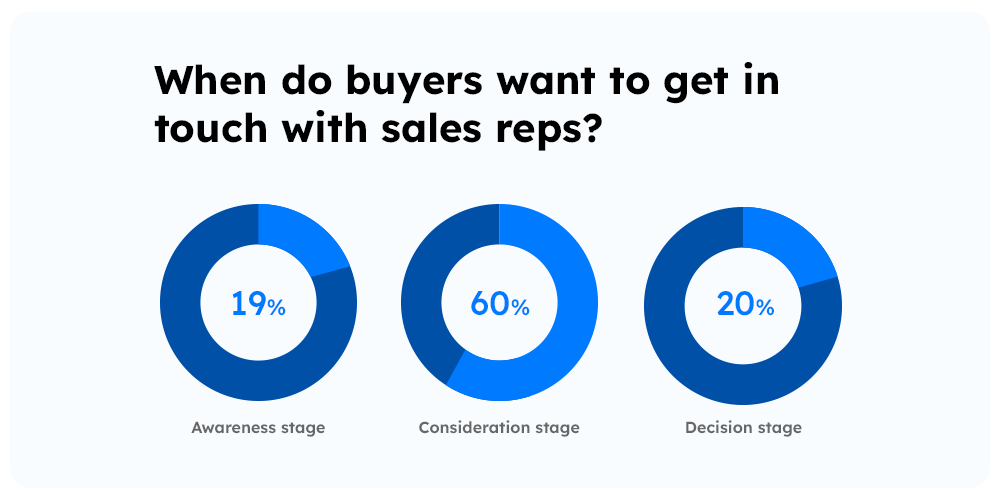
This is why a sales funnel is important.
Let’s take a look at the benefits you can get by building and managing a sales funnel.
1. Strategic lead generation
With a sales funnel, you have an accurate view of lead generated vs. converted.
If you’re running short on leads to achieving your sales or revenue targets, you can reverse calculate how much more leads you need to meet those targets. On the other hand, if you’ve more leads than you can handle, you can consider hiring more sales reps.
2. Accurate sales forecasting
By accurately predicting your future sales, you can create a sales plan and start putting in efforts to meet your projected target for the next quarter or fiscal year.
3. Improved conversion rates
Having a 360-degree view of how a lead progresses through the sales funnel and converts helps you identify the bottlenecks and devise corrective measures.
4. More accountability for your sales
With a sales funnel in place, you can track every sales activity, best sources, best-selling products, teams, geographies, etc. It also helps avoid chaos during incentive calculations because you know every individual’s performance.
5. Generate more revenues
Every benefit mentioned above, in the end, directly translates into the one benefit every business care about the most. More moolah! Even more importantly, since you know what helped you rake in the extra revenue, you will be able to replicate your success and, in time, even double it.
So, now you know the importance of a sales funnel, it’s time to start building it.
However, it’s not easy and it’s easy to make it complicated.
Let’s look at the common mistakes and best practices to avoid them.
The most common sales funnel mistakes
I have seen many managers making these mistakes (including myself sometimes), which leads to less than expected outcomes. I don’t want you to repeat them and get the maximum out of your sales funnel.
- Not having a tool to help in sales funnel management
- Not aligning lead generation with conversion
- Setting unrealistic sales goals
- Not engaging the leads enough during the first two stages
- Not having a proper lead distribution mechanism.
- Not monitoring the progress regularly.
As a rule of thumb, avoid the above mistakes to build a fully functional sales funnel.
Let’s look at the stages of the sales funnel.
Sales funnel stages
Today’s sales funnel doesn’t look like it did just ten years ago.
It’s good news for companies who have kept up with shifting trends in sales and marketing, but not so good for those that haven’t realized the game has changed.
Because of digital media, there are increasingly more entry points into your sales funnel. Prospects are dropping in at various stages and are largely in control of the process. Buyers are more informed than ever and do their homework before reaching out to companies directly.
Nonetheless, the goal of the sales funnel remains the same: to attract leads to your product or service and turn them into loyal paying customers.
Let’s look at various stages of the sales funnel.
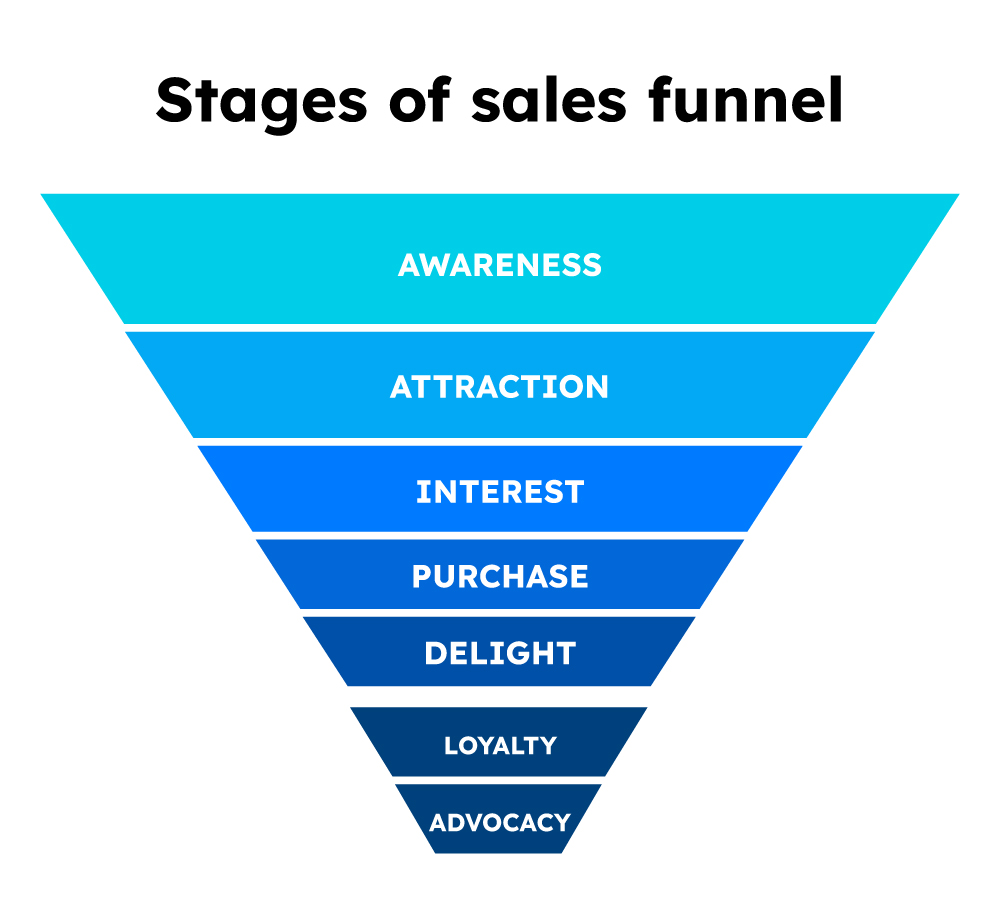
- Awareness
- Attraction
- Interest
- Purchase
- Delight
The latest addition to the stages of the sales funnel include:
- Loyalty
- Advocacy
Let’s take a closer look at these stages.
1. Awareness
Here, your target audience is hearing about your business for the very first time.
So, they need to understand what exactly you do. There are many ways to draw attention. But, before you start that, you need to figure out is where your customer is present. And then go to them.
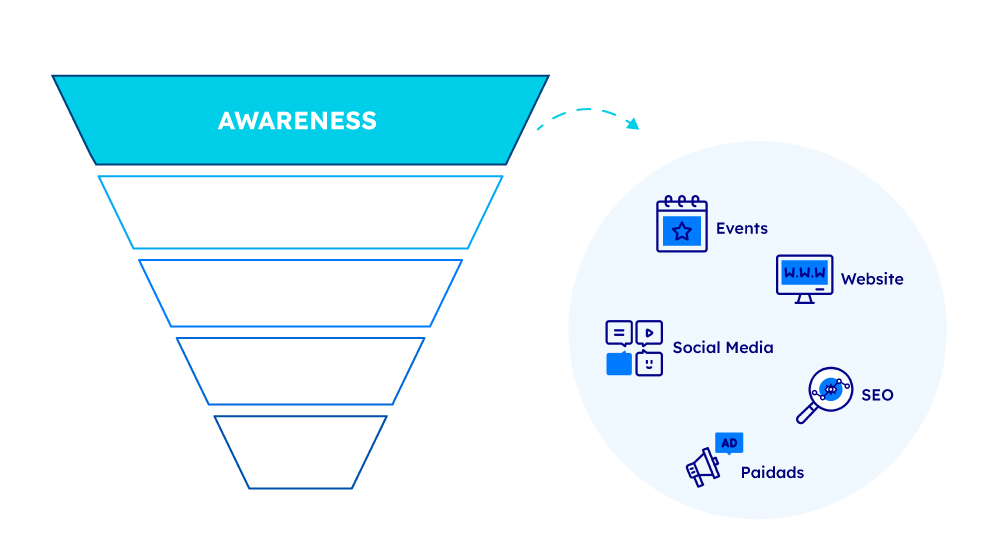
For instance, if your clientele hangs out on Facebook, run ads there, or write sponsored content that would attract them. But if you feel they are more on video streaming sites like YouTube, produce a catchy video and share widely. Similarly, to reach out to audiences offline, distribute flyers, advertise on billboards, and attend events.
2. Attraction
In this stage, you assume that your leads are at least aware of your business and know what product/service you are selling to them. It’s time to convince them as to why they need your product.
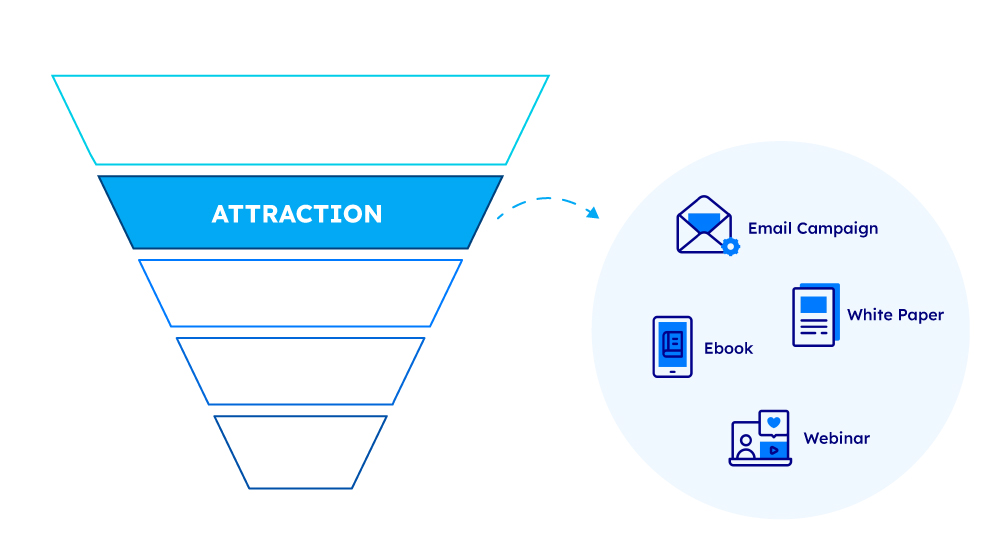
The best way to do this is to educate your customer.
Remember the series F.R.I.E.N.D.S?
Phoebe tries to sell toner to her clients with a script that educates why their clientele needs toner! Of course, you need not try to convince a suicidal man. But you get the gist.
3. Interest
The buyer now knows who you are and what you offer. They also seem interested in doing business with you. So, you have to catch the lead’s interest and ensure that the lead’s interest remains piqued. For this, refine your sales pitch, address their pain points, and offer solutions for the same.
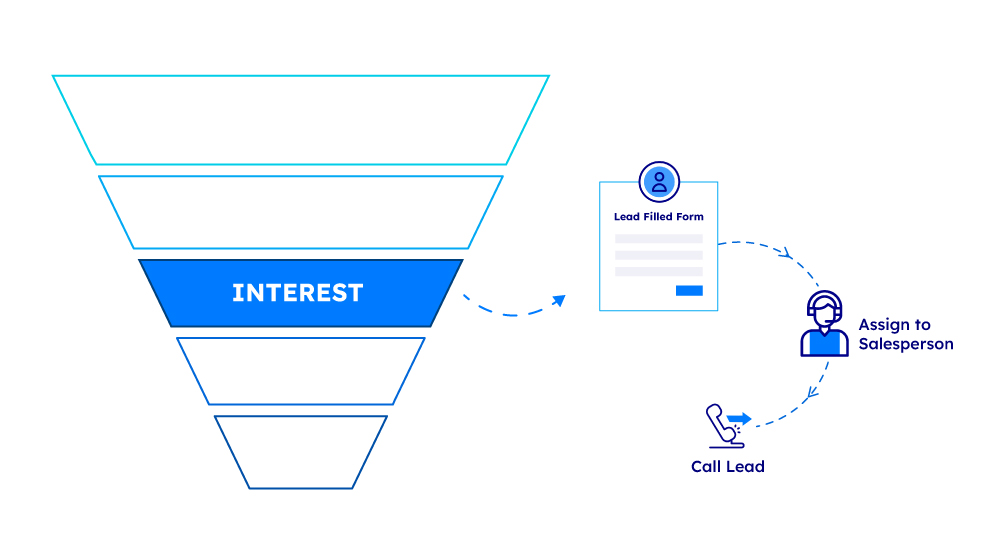
Things like sharing pre-sales documents, negotiating prices, evaluating other products, etc., happen in this stage of the sales funnel. You have to be on your toes to ensure that the sale does not move to other businesses or your competitor.
4. Purchase
Here, the lead finally chooses to buy from you. It is more of a transactional phase, where money is exchanged, and the product or service reaches the buyer.
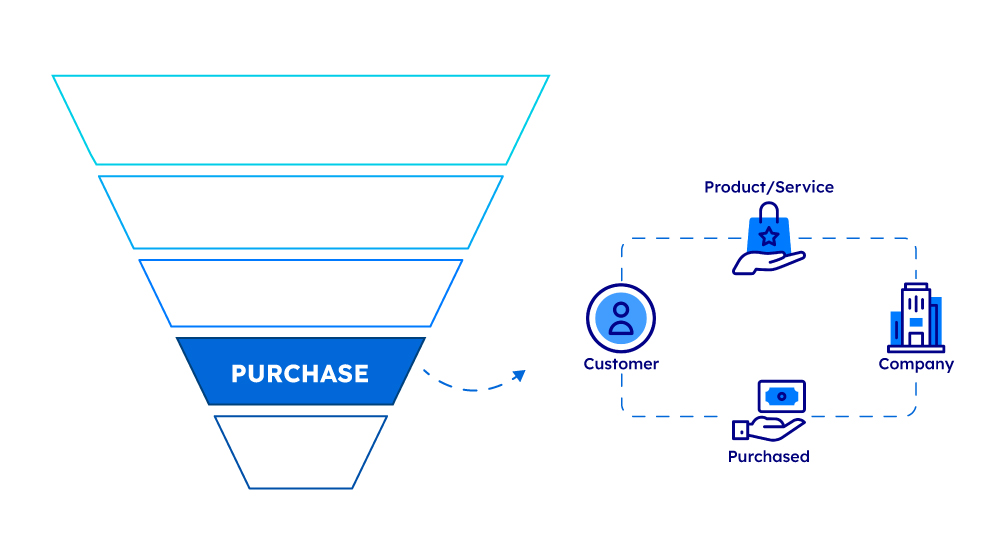
In the case of B2C sales, you must prepare for shipments. In B2B or SaaS sales, you may have to consider onboarding or installation.
5. Delight
Now, this is the stage where your funnel gives birth to the next sales funnel.
You need to ensure that your customers are happy with your product/service by ensuring quality and providing timely support (if required).
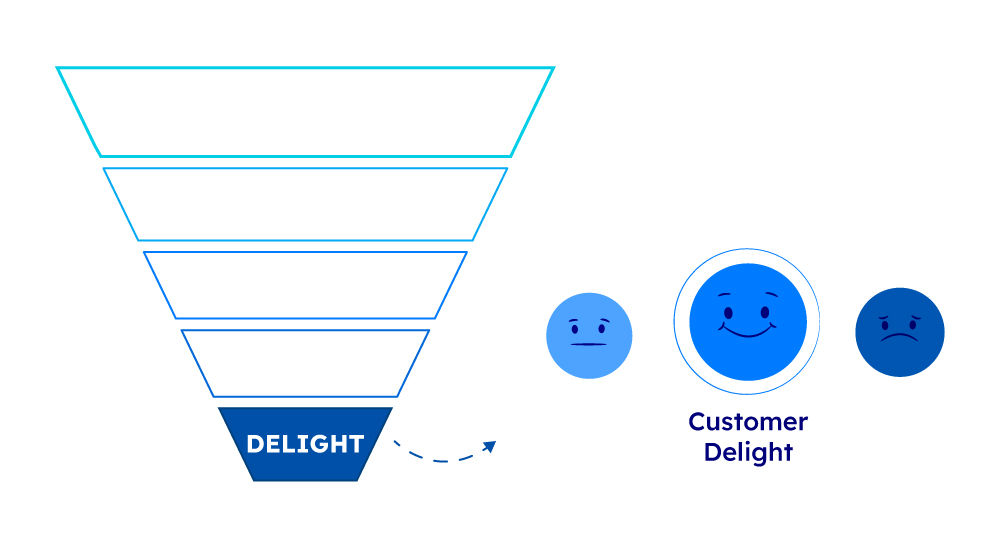
However, many businesses miss out on this step. It is mainly due to the misconception – once the purchase has been made the funnel is over.
Next, the steps you must track are loyalty and advocacy.
6. Loyalty
If you see,
- Acquiring new customers is 5 times more expensive than retaining them
- 82% of companies believe that customer retention is cheaper than acquisition
- 5% increase in customer retention may lead to 25-95% higher profits
So, include customer retention as a metric for your sales funnel.
There are several ways to nurture a relationship with existing customers. For instance, you can invite them to a webinar, offer incentives to write reviews, involve them in referral programs, ask them for a testimonial, and so on.
7. Advocacy
The power of suggestion is very high among buyers. When they hear other people talk about the good experiences or benefits they have received by using a product, they are more likely to purchase it themselves. With this in mind, you should always encourage your customers to review and rank you and your business.
Note that staring at a dashboard will not help unless you point out a fault and take measures to correct it. Follow these best practices to make the most of your sales funnel management efforts.
Sales funnel management best practices
1. Set clear and concise goals. Before you start building your funnel, know why you are doing this in the first place. Do you want to double the revenue? Do you want to target a specific audience? Or is it something else altogether? You need to know what your sales funnel has been set for to make the best use of it.
2. Track movement of your leads through the funnel. Get yourself a CRM software to know where each lead is in the funnel. It will help you understand how long it takes for a lead to become a customer and what factors influence their decision.
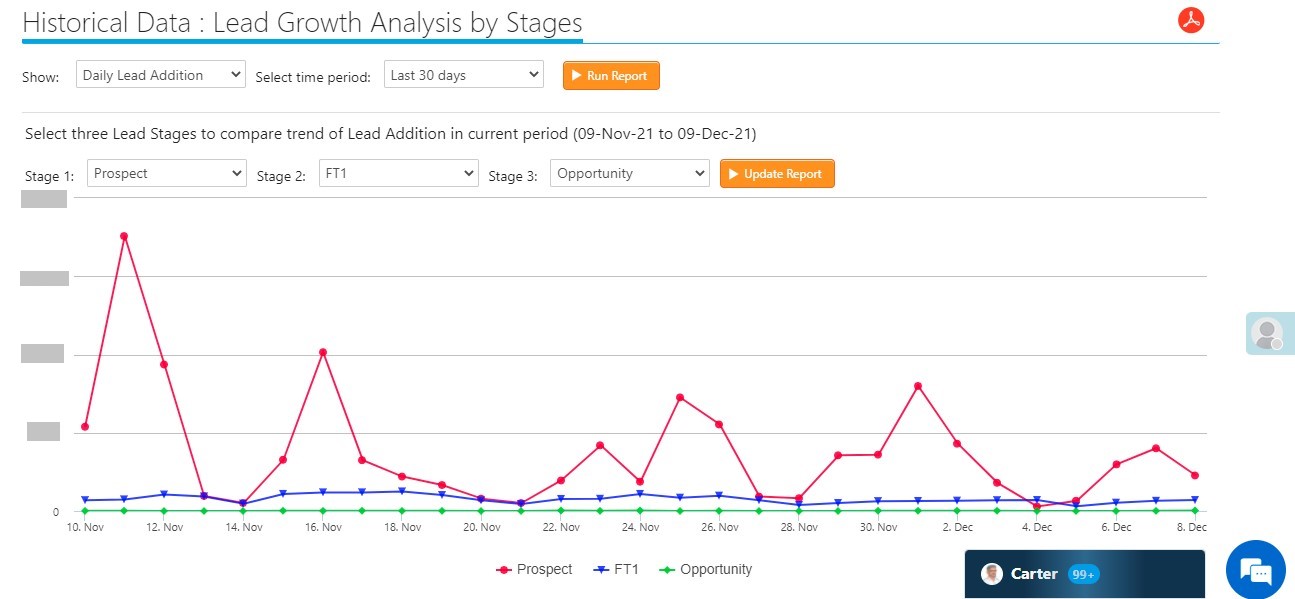
3. Talk different languages. Leads in various stages of your sales funnel would want different things. You cannot talk about the features of your product at every phase. You have to try and educate the customer during the initial stages using e-books or white papers. Send product demos to opportunities and pricing to leads who are considering you.
4. Ensure that your sales cycle is not too long. Longer sales cycles are not good in the long run and might result in lead leakage. Measure the average time it takes to close the deal and stick to that timeline.
5. Measure your progress. Track results at each stage. Note how many new leads are coming in and what is driving sales for you. This way, you will know what is working and why.
So far, we have seen the importance of the sales funnel, its stages, and effective sales funnel management techniques.
Now it’s time to see some real-life sales funnel examples.
Sales funnel examples
1. Basecamp
Businesses turn to popular collaboration software Basecamp for lessons in branding. But they’re not just about funny cartoons and vibrant visuals. Their sales funnel is one of the most straightforward examples we could find.
Basecamp attracts leads through organic website traffic (blogs, mostly) referrals and PR. Head to their home page, and you’re already in to fill in your details. Social proof abounds in the form of testimonials and account growth. They carefully explain who they are, what they do, and how people use them.
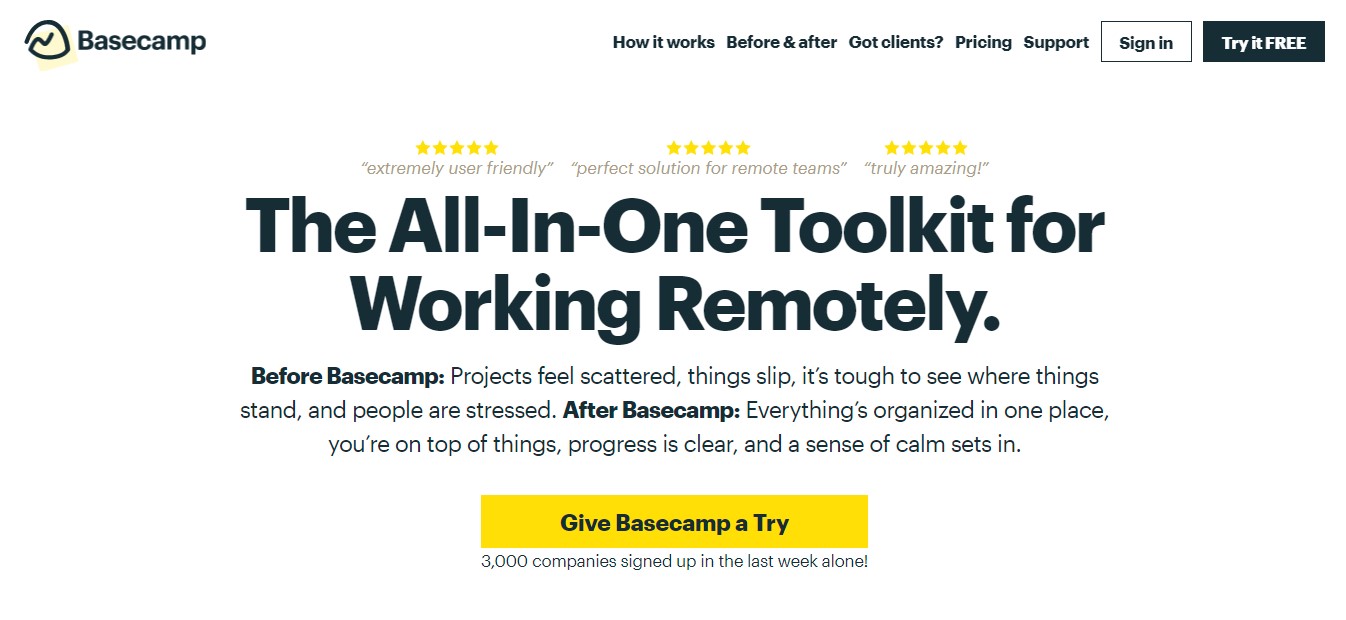
To move leads to the next step, they offer a free 30-day trial, which requires an email to put them into nurturing campaigns. Even better, they double down on this initiative by not requiring a credit card.
2. HelloFresh
This meal kit service is the largest in the United States. They’re also one of the most heavily marketed meal delivery services, which could have a lot to do with their success.
There aren’t many people who haven’t heard of HelloFresh, thanks to an $880 million growth strategy to drive awareness. They’ve invested in everything from paid digital ads to affiliate partners to social media.
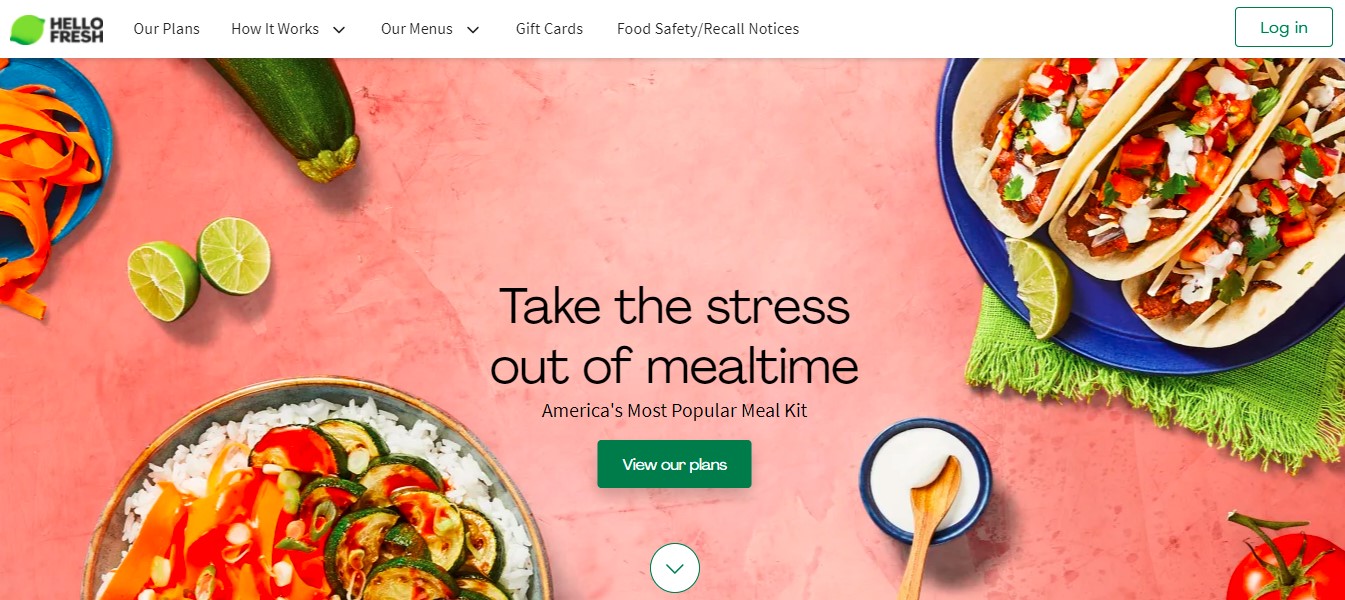
3. Groupon
This Chicago-based online store company offers millions of online shopping deals and coupons.
To earn traffic, Groupon uses a variety of paid search ads, affiliate marketing, retargeting, email marketing, and direct traffic (because most people know what Groupon is at this point).
When you arrive on their website, the first thing that you see is the coupons they offer. They also have a subscription service offering discounts on the coupons you purchase.
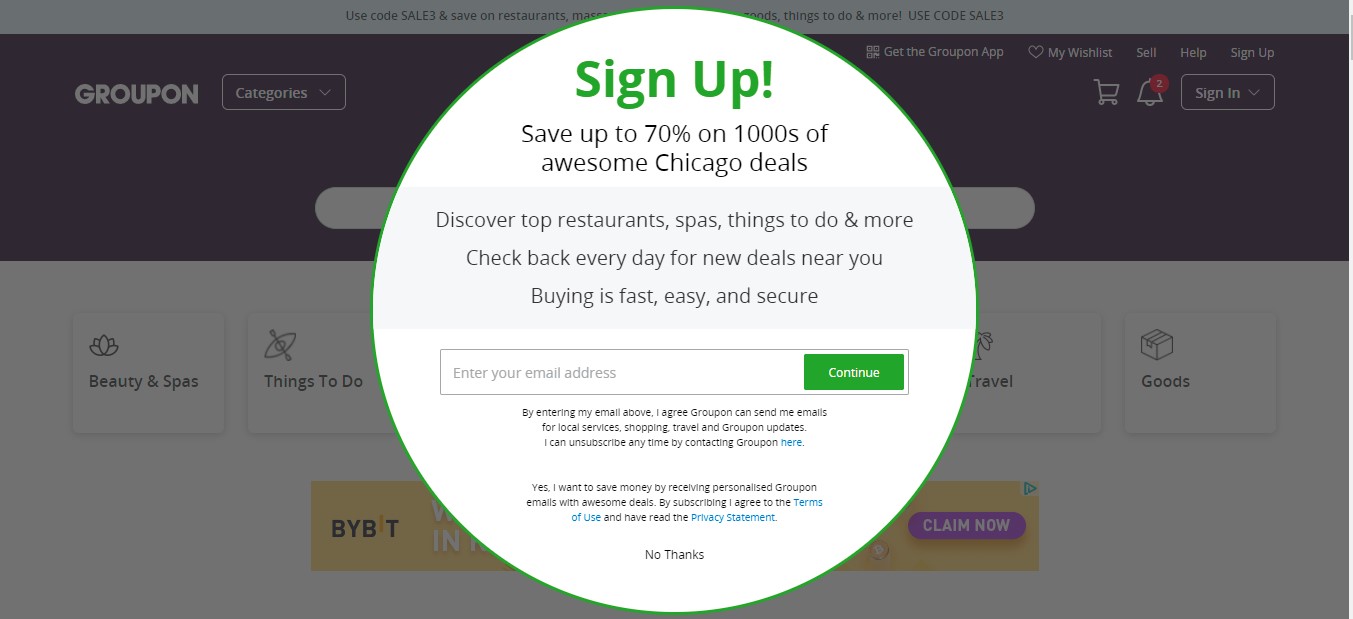
Once you sign-up, you enter their sales funnel and you start getting emails for relevant offers and discounts.
These sales funnel examples are just a few out of many potential paths you could create for your sales process. I hope it ignited ideas to build your own.
In conclusion
With so many tasks at hand, it is difficult to dig into the granular details of your sales process. But at the same time, it is also necessary to keep a tab on the ongoing activities.
That’s why sales funnel management is crucial.
It gives you an overview of all your sales efforts – from lead generation to conversion and retention.
I’d also advise using CRM software to manage your sales funnel if your lead influx is more than 500 per month and you rely on different sources to generate leads.
LeadSquared is a comprehensive sales execution CRM that helps you manage your sales funnel, sales activities, and reps, track sources, generate reports, and more.
FAQs
Here are the steps to create a sales funnel:
1. Understand your consumers by analyzing sales data and identifying your ideal buyer personas.
2. Set achievable sales goals and targets: demos, sign-ups, meetings.
3. Collect lead information by offering a free trial or sharing a resource.
4. Nurture the leads to ensure that they move down the funnel, towards closures.
You can leverage a few sales funnel metrics to gauge the effectiveness of your sales funnel. These metrics include conversion rates, customer acquisition costs, NPS, customer lifetime value, and customer retention rates.
While there are many types of sales funnels the most popular ones are: Lead Management Funnel, Upsell Funnel, Cross Sell Funnel, Free-Trial Funnel, and The Continuity Funnel.







